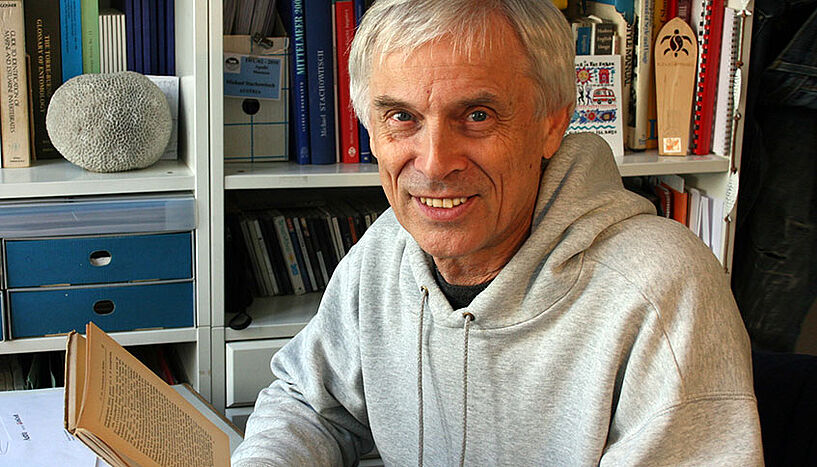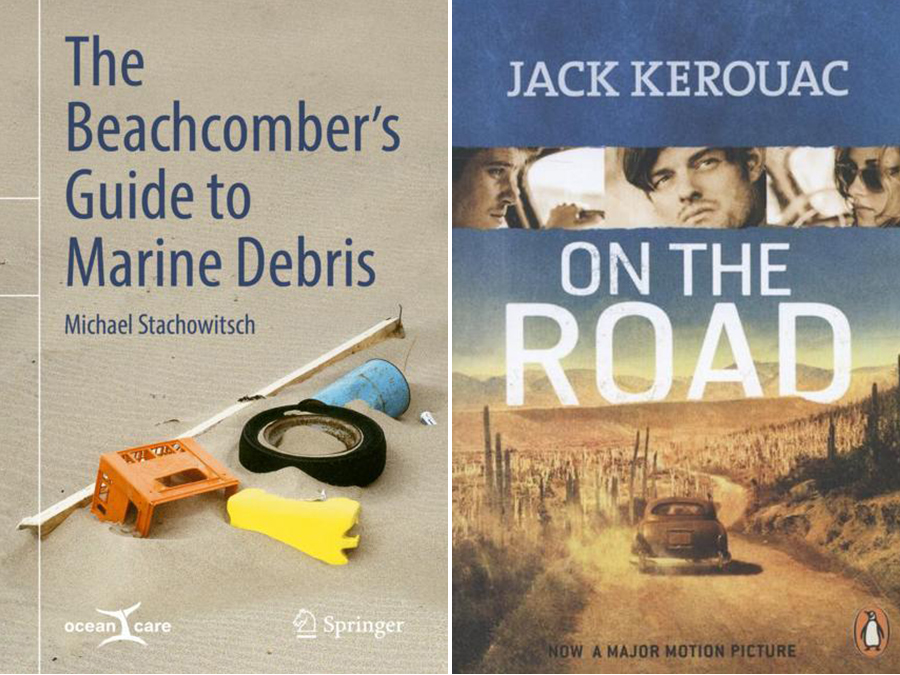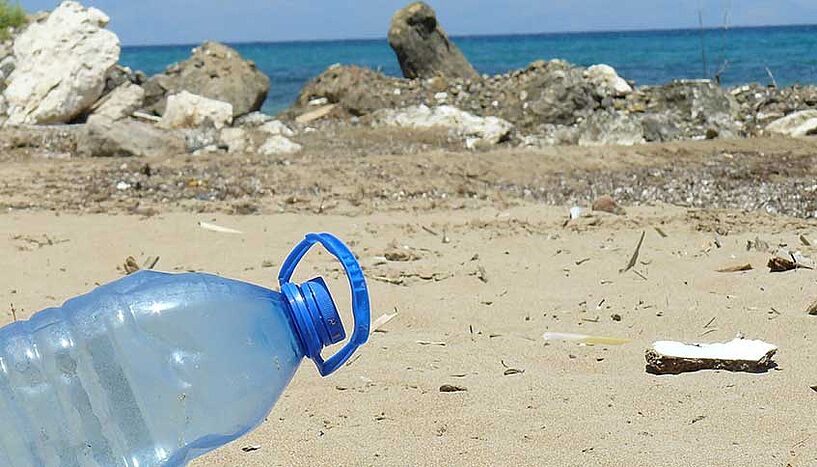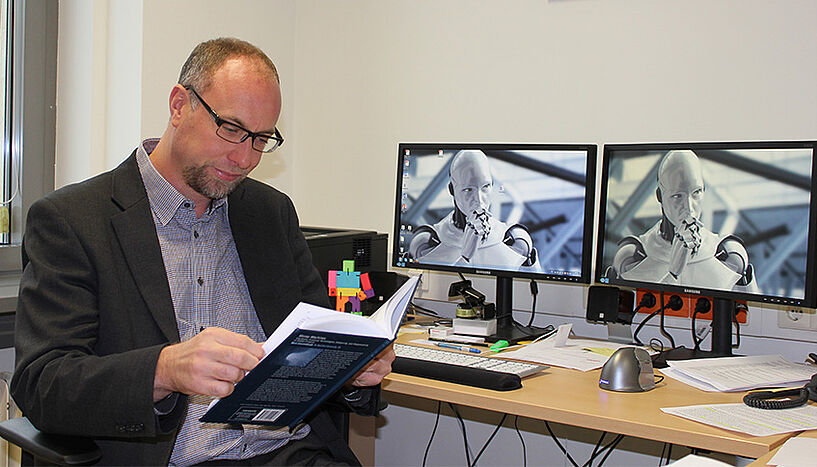"Buchtipp des Monats" by Michael Stachowitsch
| 13. Dezember 2018
"Unfortunately, the modern beachcomber, instead of encountering sea shells, is more likely today to encounter manmade objects", says the author and marine biologist Michael Stachowitsch. (© privat)
Enough plastic is thrown away each year to circle the earth four times. And that's just plastic, not considering all the other garbage we humans produce each year. Marine ecologist Michael Stachowitsch shows in his latest publication how garbage pollutes the seashores and what we can do about it.
uni:view: Your publication "The Beachcomber's Guide to Marine Debris" deals with the pollution of the oceans. What is your intention?
Michael Stachowitsch: We are surrounded by garbage: it's at our feet on the streets and circling above us as space debris. We seem to be particularly perturbed, however, when encountering litter in what we perceive to be pristine environments, and the seashore may well be the only semi-natural environment that most of us will ever visit.
Marine debris or beach litter poses a major problem for wildlife, ecosystem health, human safety, and the economic welfare of coastal communities worldwide. This is one of the hottest issues in marine ecology, and a significant proportion of all research papers in leading journals such as 'Marine Pollution Bulletin' are devoted to it – with microplastics rapidly becoming a key focus. The positive side of the story is that this is one of the few forms of marine pollution – as opposed to chemicals, heavy metals, radioactivity etc. – that individual people can actually do something about! This is the story this books seeks to tell.
uni:view: Included in the book are over 600 photographs underlining the pollution in the sea and on the beaches. Why did you choose this visual focus?
Stachowitsch: If it is true that 'A picture is worth a thousand words', then the photos have enabled me to make this into a handy, take-along, ultimate summer beach read instead of a 3-volume tome meant for the bookshelf! Most importantly, the photos highlight the otherwise almost unbelievable range of objects that are left on beaches or that wash ashore – everything including the kitchen sink! This means glass, plastic, metal, tires, paper, wood, clothing, oil, cigarette butts and other unsavory items in all their combinations. The book presents their sources, illustrates decomposition stages, suggests prevention strategies, and provides clean-up recommendations, alternative products, along with recycling and upcycling tips.
uni:view: What are the characteristics of a modern day beachcomber?
Stachowitsch: Unfortunately, the modern beachcomber, instead of encountering sea shells and other natural items, is more likely today to encounter manmade objects. The specialist's refer to it marine debris or beach litter, and this calls for recognizing the threats and taking action. Whether you are a vacationer or working on beaches (for example helping protect sea turtle nesting sites), this book will allow you to recognize the full range of items and identify sources and potential hazards. This is the first step in raising awareness and ensuring your safety in this barefoot environment.
uni:view: What can we do – is a solution even possible at this stage?
Stachowitsch: The goal is to prevent marine debris at the source, because once it's in the sea, most removal strategies are unfeasible. This means considering the six R's: rethink, refuse, re-use, repair, recycle – and adding a 'U', namely upscaling, with the fashioning of wooden pallets into shabby chic furniture being a classical example. The book animates readers, using a good shot of humor, to become beach detectives and be part of the solution and help restore our beaches, lakeshores and riverbanks to their natural glory.
And don't forget to join the nearly one million other participants in the annual international coastal cleanups – the largest single-day volunteer action in the world!

"The Beachcomber's Guide to Marine Debris" by Michael Stachowitsch
"On the Road" by Jack Kerouac
uni:view: Which book do you recommend?
Stachowitsch: "On the Road" by Jack Kerouac.
uni:view: Some thoughts on this book?
Stachowitsch: This is the book that catapulted society into a new era, defining the 'Beat' generation, ushering in the hippie movement and serving as the granddaddy of all road novels and movies. It's about rejection of the staid, restlessness and searching, all on an adrenaline high. Many of the figures in this largely autobiographic story then wrote their own books or were protagonists in books written by others. It energized me.
uni:view: You have read the last sentence, close the book. What remains?
Stachowitsch: The story doesn't necessarily end positively for all of the characters, and most were living on the edge during the storyline. My immediate thought was, 'Hey, these people are on to something here, but can't it be done with more ease, more pleasure and possibly pursuing a more righteous goal'. (td)
Michael Stachowitsch works at the Department of Limnology and Bio-Oceanography at the University of Vienna. His research interests are Benthic ecology, habitat degradation, marine debris, sea turtle ecology and coral reef ecology.



